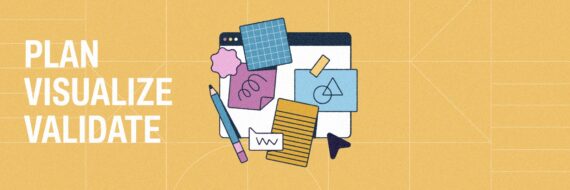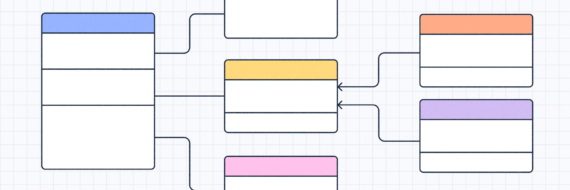Have you ever struggled to understand a complex workflow or wished there was a way to easily visualize the various steps in a process? Enter process maps and flowcharts, two powerful tools designed to help you make sense of the intricate web of activities and decisions that make up your organization’s operations.
In this process map vs flowchart comparison we’ll explore the unique characteristics and applications of both and give you the knowledge and guidance you need to make the most of each one.
Key takeaways
- Process maps and flowcharts are distinct tools used to emphasize different aspects of a process.
- Process maps provide detailed information about a process while flowcharts simplify processes into individual steps for easier comprehension.
- Effective visualizations enhance communication & collaboration in organizations.
Defining Process Maps and Flowcharts
Process maps and flowcharts are both visual representations of workflows and procedures, but they’re not interchangeable. Each has its own distinct attributes and applications that make one more suited to certain situations than the other.
The main difference between flowcharts and process maps is the kind of results you can expect to get from each. A process map is a layout of a specific process; each step is shown from start to finish. Flowcharts are more general and document the basics of a work or information flow.
Grasping these differences is key to selecting the appropriate tool to convey information effectively to your team and stakeholders.
Process Maps: An Overview

Use this free Product Testing Process Template
Process maps provide a detailed, sequential representation of a process, including its inputs, actions, and outputs. This level of detail allows you to locate areas for improvement and standardize workflows, making it invaluable in industries like manufacturing and quality management.
Process maps can be especially useful for Six Sigma professionals, who rely on this level of granularity to identify areas of strength and weakness to drive great efficiency.
Unsure where to start? Use our handy guide to learn how to create a process map.
Flowcharts: An Overview

Use this free System Flowchart Template
Conversely, flowcharts are more general, showing the basic layout of a workflow, and aim to simplify complex processes into more manageable steps.
They use a combination of symbols and arrows to represent the sequential, step-by-step workflow, making it easy for people involved with little or no background in the subject matter to understand the overall process.
This type of graphical representation allows for quick comprehension of large amounts of info and can help identify connections between different steps in a process.
Flowcharts are commonly used in computer programming, engineering and project management to depict the flow of information and decision-making throughout a process.
Check out our instructions on how to make a flowchart to get a better understanding.
Flowchart vs process map symbols

Simply put, the process mapping symbols and flowchart rules are the same for both.
Depending on the purpose of the flowchart or map the symbols you utilize can vary but in general, you’ll use a variety of shapes and arrows to represent the workflow.
🎬 Learn what Slickplan can do!
We filmed a short video to show you exactly how to use Slickplan
Key Differences Between Process Maps and Flowcharts

Although closely related, process maps and flowcharts differ in terms of detail level and use cases.
In the next sections, we’ll delve further into these distinctions and then get into the best practices for developing effective process maps and flowcharts.
Level of Detail
Process maps typically break down a complex process in a more granular way, highlighting the inputs, actions and outputs of a process; usually featuring a timeline that delineates the duration and sequence of each step.
This can be particularly helpful for understanding how long a process takes and identifying areas where enhancements can be made, as opposed to relying solely on a detailed outline.
In contrast, flowcharts focus on simplifying processes into more broad individual steps, making it easier for a wider audience to understand the overall process and find potential issues or bottlenecks.
Use Cases

Use this free ISO 9001 Process Map Template
Considering application scenarios, process maps are generally more appropriate where more in-depth comprehension of an operation is required, like in a manufacturing process or quality management scenario.
Their focus on timelines and rich detail makes them an ideal tool for identifying areas to enhance and standardize workflows.

Flow charts, on the other hand, excel at simplification and can be particularly useful in industries like software development or project management, where the focus is more on the flow of information and decision-making than on the specific details of each step.
A well-designed flow chart can be a valuable tool in understanding these processes.
Creating Effective Process Maps and Flowcharts

Use this free Checkout Process Flowchart Template
Crafting process maps and flowcharts that effectively tell the story of your operation is a critical skill for those aiming to enhance their organization’s workflows and processes. By following a few simple steps, you can ensure that your visualizations are accurate, comprehensible and easy to modify as needed.
In the upcoming sections, we’ll break down those steps and equip you with the knowledge to build effective process maps and flowcharts.
Best Practices for Process Mapping
- Pinpoint the process you aim to document and name the activities involved.
- Once you have a clear understanding of the process, start sequencing the steps.
- Use shapes and arrows to represent the relationships between inputs, actions and outputs.
- Review the process map with your team to ensure accuracy and ease of understanding.
By following these steps in sequential order, iterating as needed and using intuitive process mapping tools, you can create a clear and effective process map for any operation.
In addition to accurately depicting the process in depth, a good map should also:
- Be easy to modify
- Use universally understood shapes and arrows to represent the various elements of the process
- Ensure that the map and its visual components are well-organized and easy to follow
By adhering to these best practices, you can create a process map that not only accurately documents a procedure but also serves as a valuable tool for identifying areas for improvement.
Best Practices for Flowcharting
The steps for making a flow chart are essentially the same as what we outlined for process mapping:
- Start by outlining the scope of the operation and ID the decisions and steps that need to be included in the flow chart.
- Order the steps in a logical sequence.
- Use symbols and arrows to represent the relationships between them.
- Be sure to review with your team to ensure it accurately represents every step and is easily understood by all.
How can you make a flow chart easier to follow?
By using consistent and simple visual language, i.e., shapes and arrows, to represent the various elements of the process.
Get this right and you’ll have a great tool for streamlining workflows and pinpointing issues.
By recognizing the key differences between these tools and following best practices you can unlock the potential for refinement and innovation in your organization because the types of process maps and types of flowcharts you can create are truly endless.
The good news, depending on which flowchart software you use, you can build both types of diagrams in the same place.
Real-Life Examples of Process Maps and Flowcharts

Use this free Detailed Process Map Template
Practical instances for these instruments span industries and can be used in all departments within a company, demonstrating their adaptability and utility in diverse applications.
From product development to customer service, these visual tools can help organizations better understand and optimize their workflows, ultimately leading to improved efficiency, communication, and collaboration among team members.
Process maps and flowcharts can highlight bottlenecks and streamline operations.
Process Map Examples

Use this free Sales Process Map/Flowchart Template
These can be found in industries like manufacturing, where they’re used to document and optimize the manufacturing process and other business processes, including process measurements. You’ll also see them in sales, where they can help sharpen the process and enhance customer satisfaction.
Some specific examples of process maps include product process maps, which provide a visual representation of the stages of production for a product, and sales process maps, which outline the steps involved in making a sale and can help identify areas for improvement.
Flowchart Examples

Use this free Login Process Flowchart Template
You’ll see these in fields like engineering, where they’re used to depict the flow of information and decision-making in complex projects, or in computer programming, where they can help programmers visualize algorithms and software processes.
Some specific examples of flowcharts include engineering flowcharts, which provide a step-by-step representation of a process in fields like mechanical or electrical engineering, and algorithm flowcharts, which can help programmers understand and optimize complex code structures.
Think visually. Improve UX with Slickplan
Build intuitive user flows, stronger customer journeys and improve information architecture.
Try Slickplan for your process map or flowchart needs!
Where a visual representation of tasks and workflows is needed to create a broad understanding, you’ll find that flowcharts and process maps are the best ways to make it happen. Fortunately, it’s never been easier and quicker to build them than with Slickplan, the most intuitive tool for collaboratively designing and sharing your work.
Sign up for our free 14-day trial (no credit card required) and begin building your flowcharts and process maps today!
Learn more about our diagramming tool on our Diagram Maker feature page.






 X
X
![What is a decision tree? [Practical examples & use cases 2026]](https://cdn-proxy.slickplan.com/wp-content/uploads/2023/08/Decision_tree_cover-570x190.png)
